This is a tricky question. I suspect it will require some advanced knowledge of file systems to answer.
I have a WPF application, "App1," targeting .NET framework 4.0. It has a Settings.settings file that generates a standard App1.exe.config file where default settings are stored. When the user modifies settings, the modifications go in AppData\Roaming\MyCompany\App1\X.X.0.0\user.config. This is all standard .NET behavior. However, on occasion, we've discovered that the user.config file on a customer's machine isn't what it's supposed to be, which causes the application to crash.
The problem looks like this: user.config is about the size it should be if it were filled with XML, but instead of XML it's just a bunch of NUL characters. It's character 0 repeated over and over again. We have no information about what had occurred leading up to this file modification.
We can fix that problem on a customer's device if we just delete user.config because the Common Language Runtime will just generate a new one. They'll lose the changes they've made to the settings, but the changes can be made again.
However, I've encountered this problem in another WPF application, "App2," with another XML file, info.xml. This time it's different because the file is generated by my own code rather than by the CLR. The common themes are that both are C# WPF applications, both are XML files, and in both cases we are completely unable to reproduce the problem in our testing. Could this have something to do with the way C# applications interact with XML files or files in general?
Not only can we not reproduce the problem in our current applications, but I can't even reproduce the problem by writing custom code that generates errors on purpose. I can't find a single XML serialization error or file access error that results in a file that's filled with nulls. So what could be going on?
App1 accesses user.config by calling Upgrade() and Save() and by getting and setting the properties. For example:
if (Settings.Default.UpgradeRequired)
{
Settings.Default.Upgrade();
Settings.Default.UpgradeRequired = false;
Settings.Default.Save();
}
App2 accesses info.xml by serializing and deserializing the XML:
public Info Deserialize(string xmlFile)
{
if (File.Exists(xmlFile) == false)
{
return null;
}
XmlSerializer xmlReadSerializer = new XmlSerializer(typeof(Info));
Info overview = null;
using (StreamReader file = new StreamReader(xmlFile))
{
overview = (Info)xmlReadSerializer.Deserialize(file);
file.Close();
}
return overview;
}
public void Serialize(Info infoObject, string fileName)
{
XmlSerializer writer = new XmlSerializer(typeof(Info));
using (StreamWriter fileWrite = new StreamWriter(fileName))
{
writer.Serialize(fileWrite, infoObject);
fileWrite.Close();
}
}
We've encountered the problem on both Windows 7 and Windows 10. When researching the problem, I came across this post where the same XML problem was encountered in Windows 8.1: Saved files sometime only contains NUL-characters
Is there something I could change in my code to prevent this, or is the problem too deep within the behavior of .NET?
It seems to me that there are three possibilities:
- The CLR is writing null characters to the XML files.
- The file's memory address pointer gets switched to another location without moving the file contents.
- The file system attempts to move the file to another memory address and the file contents get moved but the pointer doesn't get updated.
I feel like 2 and 3 are more likely than 1. This is why I said it may require advanced knowledge of file systems.
I would greatly appreciate any information that might help me reproduce, fix, or work around the problem. Thank you!




